 Faisal spring cleans with her daughter and is shocked at the toxic chemicals she finds in her cupboards. Teens are especially at risk.
Faisal spring cleans with her daughter and is shocked at the toxic chemicals she finds in her cupboards. Teens are especially at risk.
When your ancestral roots include a tangle of Irish housewives, you instinctively interpret “Vernal Equinox” as “spring cleaning”. I live in a furnished apartment. I’ve shed most of my superfluous stuff after a couple international moves. So mine is a micro spring-cleanup. Sort photos; recycle books; shakeout a closet and the bathroom shelves.
The bathroom shelves sound simple enough. But I have a teenage daughter. So, we suit up in old clothes, open windows to air out long-spilt nail polish remover and exploded body wash, and jump in. Boxes of ancient lotions; mini-shampoos and conditioners swiped from a year’s-worth of hotels; dust-covered toiletry gift sets, never opened; and then, the nail polishes.
Crazy thing is this kid doesn’t use make-up. She just loves scent. Her motley collection would disappear if only I could source scratch ‘n sniff wallpaper. She agrees. We start sorting. As we unscrew each cap to whiff and judge the fantasticness of each smell, I read labels.
It starts with parabens, benzoates and xylens. Moves on to butyl, methyl, ethyl and propylisobutyl. In comes formaldehyde, nonylphenol, octylphenol, and tongue-twisting alkylphenol ethoxylates. Top it all off with perfumes. It’s a chemistry lab Madame Curie would kill for, neatly packaged in pretty bottles and teensy tubes.
I swap stories with a mother of twin 6-year-olds. Her girls are mad for nail polish, the next rung up from bubble bath on the kiddie-cosmetics ladder. Twenty minutes of internet meandering on this and we both have headaches.
The Campaign for Safe Cosmetics (CSC -links to website) is a coalition of women’s health, environmental health and consumer-rights organizations. They publish reports, host a website, and run a companion blog exposing the chemical truth about toiletries we all use. They relentlessly query cosmetic giants on flash-points like how can products pitched to women contain ingredients linked to reproductive illness? Can companies self-marketed as leaders against breast cancer use chemical ingredients that might cause the disease?
The Environmental Working Group (EWG), one of the CSC’s founders, strives to expose health and environmental threats hidden in everyday products. Their excellent website broadcasts some dizzying findings.
In industrialized nations, nine out of ten girls regularly wear makeup by age 14. Pubescent girls are most vulnerable to makeup’s chemical ingredients, some of which have proven links to breast cancer. In a study of 20 teenagers, EWG found evidence of 13 different hormone-altering chemicals in the girls’ blood and urine samples. Their research shows that a typical kid is exposed to about 27 product ingredients that haven’t been found safe for growing bodies.
EWG claims that 77 percent of the ingredients in 1,700 child-specific products have yet to be assessed for safety. CSC’s 2009 report, No More Toxic Tub, revealed that dozens of bestselling kid’s bath products are contaminated with cancer-causing formaldehyde and 1,4-dioxane.
The toxins in your make-up:
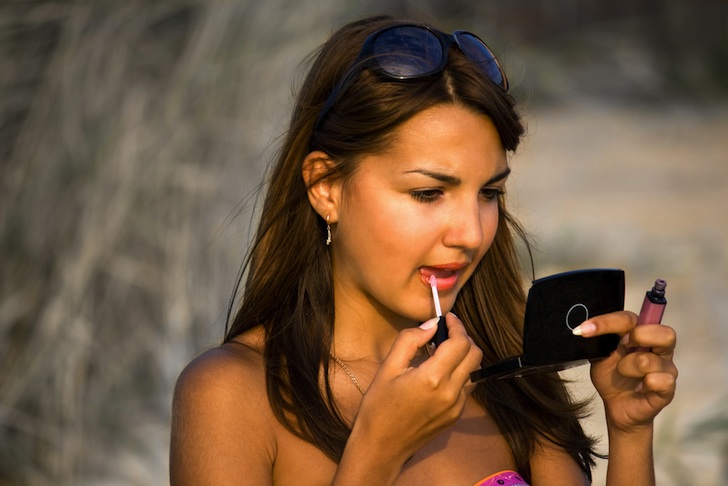
Lipstick toxins
1. Phthalates – Used in hairsprays, perfume and nail polish; they act as hormone disruptors and affect fertility. They cause allergies, damage kidneys, and have been linked to asthma. Phthalates are banned from US children’s toys, but not toiletries.
2. Parabens – Used as a preservative in deodorants, moisturizers and toothpaste; parabens are estrogen mimics. They’re linked to breast and testicular cancers.
3. Xylene – Used as a nail polish solvents; it irritates the skin and respiratory tract, may cause liver damage, and is narcotic in high concentrations.
4. Formaldehyde – Used as a disinfectant, germicide, fungicide and preservative in deodorants, shampoos, handwash and nail polish; it’s been found to cause lung cancer in rats. It irritates eyes, respiratory tract and mucous membranes.
5. Alkylphenol ethoxylates – Used to make shampoos foam; these are hormone disruptors and extremely toxic. They may be carcinogenic. They cause asthma and eczema, and damage the central nervous system.
6. Perfume – Synthetic fragrances are linked to breathing difficulties and allergies. About 2,600 chemicals are commonly used in perfume; 95% of chemicals used to scent cosmetics are synthetic compounds derived from petroleum. Twenty-six of these chemicals are on the EU banned list.
That’s why we only use natural perfume.

Ayala Moriel makes perfume natural, naturally
Cosmetic ingredients are often considered trade secrets, and they’re exempt from labeling laws. The industry is widely unregulated. The very nature of these products hold their greatest danger: applied directly to the skin, chemicals are easily absorbed and pass into the bloodstream.
Consider the youngest users. These chemicals are found in baby shampoos, lotions and soaps. How often is your baby rub-a-dub-dubbed in the chemical tub?
How to shop for make-up without toxins:
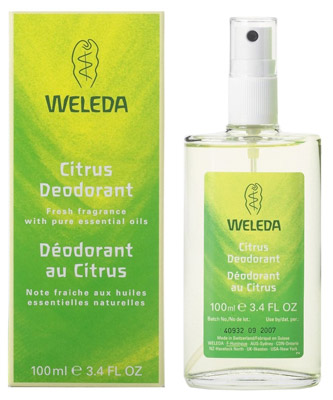
Product standards vary internationally. Ingredients within a same-name product can differ based on point of manufacture. Testing standards are globally inconsistent; chemicals banned by one nation may be acceptable in another. Consumer protection websites can educate and inform, but we’re fully responsible to take care before we buy. CSC offers these few tips on how to shop smart:
- Simplify: Select products with fewer ingredients and no synthetic fragrance or dyes. Use fewer products overall. Look for natural creams and deodorants with materials you recognise. Good face creams may need to be kept refrigerated.
- Choose safety: Learn more. Check out EWG’s Skin Deep Cosmetic Database and search almost 70,000 products. Learn about ingredients and associated risks. See if they test on animals. Find safer alternatives. See also their Safety Guide to Children’s Personal Care Products.
- Read labels: Select products that don’t contain any of the ingredients mentioned in this article.
It’s not all ugly. Hundreds of companies meet CSC safety standards, and another hundred are making measurable progress towards those goals. These industry champions show it’s possible to make safe products, that work great (and, yes, kid, they smell fabulous) without using hazardous chemicals.
Asthma? Allergies? Eczema? Maybe she’s born with it – but maybe it’s her choice of toiletries.

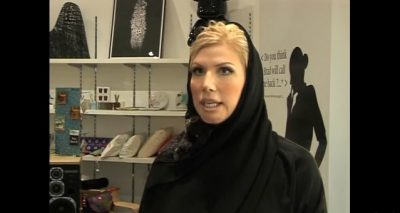
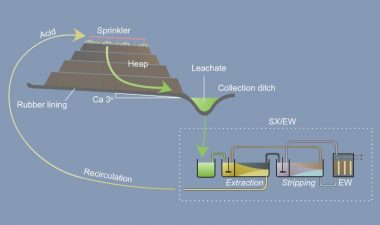
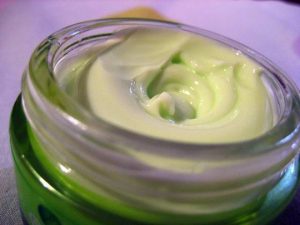
R.M.C –
Thank you for the sensitive observations. Haven’t been in the US for awhile – uncertain as to what bills are in play – but hope that sensible suggestions like yours are making their way into legislation.
Thanks for spreading the word to GP readers –
Laurie
Tamara – just delayed finishing a work report in favor of reading your excellent link – brilliant stuff!
So the white streaks in my hair are caused by hydrogen peroxide? Where was that naturally-produced chemical when I was 17 and desirous of Debbie Harry hair?
Thanks for the great connection to your writing. Maybe you can be incited to post for the Green Prophet? Best, Laurie
The potential for chemical reform is quite exciting, but it should be done in a way that doesn’t take the lives of millions of animals (for toxicity testing) in the name of better protection for human health and the environment – and to bring the latest lipstick shade to the market. The revised bill should mandate and create market incentives to use nonanimal methods. We need to ensure that chemical testing is in line with the 21st century and relies on modern, human cell and computer-based methods that provide accurate data on how a chemical acts and what the impact on human health may be.
Great article and so glad to see others realizing the hidden dangers in personal care and cleaning items. I also started learning more about chemicals so I could get safer products for my kids. The quest lead to me opening Natural e GREEN: Natural Health & Wellness store and to researching and writing what is now hundreds of related articles and two books (so far!)
Your list is great and there are tons of ingredients to avoid – another list is here: http://tamaralaschinsky.suite101.com/chemicals-to-avoid-in-personal-care-products-baby-kids–adults-a307563#ixzz15NWZ49TK
Glad to see more consumers getting aware and not all products are bad. I only use truly-natural products now and they smell awesome, work great and aren’t that much more costly than what I used to buy! Cheers!